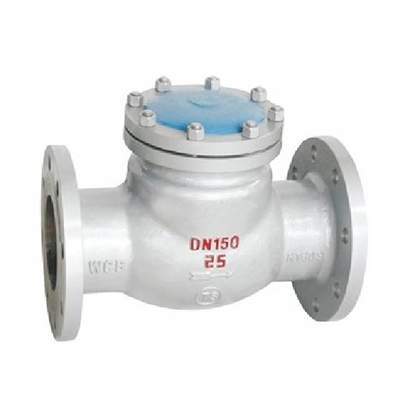Welcome to My Blog!
Before we dive into the content, I’d love for you to join me on my social media platforms where I share more insights, engage with the community, and post updates. Here’s how you can connect with me:
Facebook:https://www.facebook.com/profile.php?id=61563865935136
Now, let’s get started on our journey together. I hope you find the content here insightful, engaging, and valuable.
Introduction

Check valves are indispensable components in fluid handling systems, designed to ensure one-way flow and prevent backflow. Understanding the various types of check valves and their specific applications is crucial for selecting the right valve for your needs. This blog will explore the different types of check valves, their applications, and essential considerations for optimal performance. We will discuss the fundamental aspects of check valve functionality, including the mechanisms that prevent reverse flow and the materials used in their construction.
Check valves are widely used in various industries, including water treatment, oil and gas, chemical processing, and HVAC systems. The selection of the appropriate type of check valve depends on factors such as fluid type, pressure, temperature, and flow rate. This guide aims to provide a comprehensive overview of the different types of check valves and their applications, helping you make informed decisions for your fluid handling systems.
Swing Check Valves: Versatile and Reliable
Swing check valves are among the most common types of check valves, known for their simple design and reliable performance. They feature a disc that swings on a hinge, allowing forward flow and closing to prevent reverse flow. Swing check valves are suitable for various applications, including water, oil, and gas pipelines.
Applications of Swing Check Valves
Swing check valves are widely used in water treatment plants, sewage systems, and irrigation systems. Their robust design allows them to handle large volumes of fluid with minimal pressure drop. They are also used in oil and gas pipelines to prevent backflow and protect pumps and compressors.
Advantages and Limitations
The primary advantage of swing check valves is their simplicity and reliability. However, they may not be suitable for applications with pulsating flow or high-pressure surges, as the disc can slam shut, causing damage. Proper installation and maintenance are essential to ensure optimal performance.
Lift Check Valves: Precision and Efficiency
Lift check valves, also known as piston check valves, feature a disc that lifts vertically to allow forward flow and closes by gravity or spring pressure to prevent reverse flow. They are ideal for applications requiring precise flow control and minimal leakage.
Applications of Lift Check Valves
Lift check valves are commonly used in high-pressure systems, such as boiler feed water systems and chemical injection lines. They are also used in air compressors and hydraulic systems to ensure efficient and reliable operation.
Advantages and Limitations
Lift check valves offer excellent sealing capabilities and are suitable for high-pressure applications. However, they may have a higher pressure drop compared to swing check valves. Proper selection of spring tension is crucial for optimal performance.
Ball Check Valves: Simple and Effective
Ball check valves use a spherical ball that moves within the valve body to control flow. The ball is lifted by forward flow and seated by gravity or back pressure to prevent reverse flow. Ball check valves are known for their simple design and effective sealing capabilities.
Applications of Ball Check Valves
Ball check valves are used in various applications, including chemical processing, food and beverage, and medical industries. They are also used in sump pumps and wastewater systems to prevent backflow.
Advantages and Limitations
Ball check valves are easy to maintain and offer excellent sealing capabilities. However, they may not be suitable for applications with high-viscosity fluids or large debris. Proper material selection is essential to ensure compatibility with the fluid being handled.
Butterfly Check Valves: Compact and Lightweight
Butterfly check valves feature a disc that rotates on a central axis to control flow. They are compact and lightweight, making them ideal for space-constrained applications. Butterfly check valves are commonly used in HVAC systems and water treatment plants.
Applications of Butterfly Check Valves
Butterfly check valves are widely used in large-diameter pipelines and low-pressure systems. Their compact design and low-pressure drop make them suitable for various industrial applications.
Advantages and Limitations
Butterfly check valves offer a compact design and low-pressure drop. However, they may not provide as tight a seal as other types of check valves. Proper installation and alignment are essential to ensure optimal performance.
Duckbill Check Valves: Maintenance-Free and Reliable
Duckbill check valves feature a flexible elastomer sleeve that collapses to prevent reverse flow. They are maintenance-free and reliable, making them ideal for applications with solids or slurries.
Applications of Duckbill Check Valves
Duckbill check valves are commonly used in wastewater treatment plants, sewage systems, and mining operations. Their flexible design allows them to handle solids and slurries without clogging.
Advantages and Limitations
Duckbill check valves are maintenance-free and offer excellent resistance to clogging. However, they may not be suitable for high-pressure applications or fluids with high temperatures. Proper material selection is essential to ensure compatibility with the fluid being handled.
Diaphragm Check Valves: Sensitive and Accurate
Diaphragm check valves use a flexible diaphragm to control flow. They are sensitive and accurate, making them ideal for applications requiring precise flow control. Diaphragm check valves are commonly used in medical devices and analytical instruments.
Applications of Diaphragm Check Valves
Diaphragm check valves are widely used in chemical dosing systems and laboratory equipment. Their sensitive design allows them to handle small volumes of fluid with high accuracy.
Advantages and Limitations
Diaphragm check valves offer excellent accuracy and sensitivity. However, they may not be suitable for high-pressure applications or fluids with high temperatures. Proper material selection is essential to ensure compatibility with the fluid being handled.
In-Line Check Valves: Versatile and Easy to Install
In-line check valves are designed for easy installation within pipelines. They are available in various materials and sizes, making them suitable for diverse applications. In-line check valves are commonly used in residential and commercial plumbing systems.
Applications of In-Line Check Valves
In-line check valves are widely used in water heaters, washing machines, and dishwashers. Their compact design and easy installation make them suitable for various plumbing applications.
Advantages and Limitations
In-line check valves offer easy installation and versatility. However, they may have a higher pressure drop compared to other types of check valves. Proper selection of materials and sizes is essential to ensure optimal performance.
Check Valve Selection Guide

Selecting the right type of check valve is crucial for ensuring optimal performance and preventing backflow. Consider the following factors when choosing a check valve:
| Factor | Description |
|---|---|
| Fluid Type | The type of fluid being handled, including its viscosity, temperature, and chemical compatibility. |
| Pressure | The operating pressure of the system, including maximum and minimum pressures. |
| Temperature | The operating temperature of the system, including maximum and minimum temperatures. |
| Flow Rate | The flow rate of the fluid, including maximum and minimum flow rates. |
| Installation | The installation requirements, including space constraints and pipeline configuration. |
| Maintenance | The maintenance requirements, including ease of access and cleaning. |
| Cost | The initial cost of the valve and long-term maintenance costs. |
Conclusion
Understanding the different types of check valves and their applications is essential for selecting the right valve for your needs. Swing check valves, lift check valves, ball check valves, butterfly check valves, duckbill check valves, diaphragm check valves, and in-line check valves each offer unique advantages and limitations. By considering the factors outlined in this guide, you can make informed decisions for your fluid handling systems.
For high-quality check valves that meet your specific requirements, contact us today.
FAQ
What is a check valve?
A check valve is a one-way valve that allows fluid to flow in one direction and prevents backflow in the opposite direction.
What are the different types of check valves?
The different types of check valves include swing check valves, lift check valves, ball check valves, butterfly check valves, duckbill check valves, diaphragm check valves, and in-line check valves.
How do I select the right check valve?
To select the right check valve, consider factors such as fluid type, pressure, temperature, flow rate, installation requirements, maintenance, and cost.
What are the applications of check valves?
Check valves are used in various industries, including water treatment, oil and gas, chemical processing, HVAC systems, and plumbing systems.
